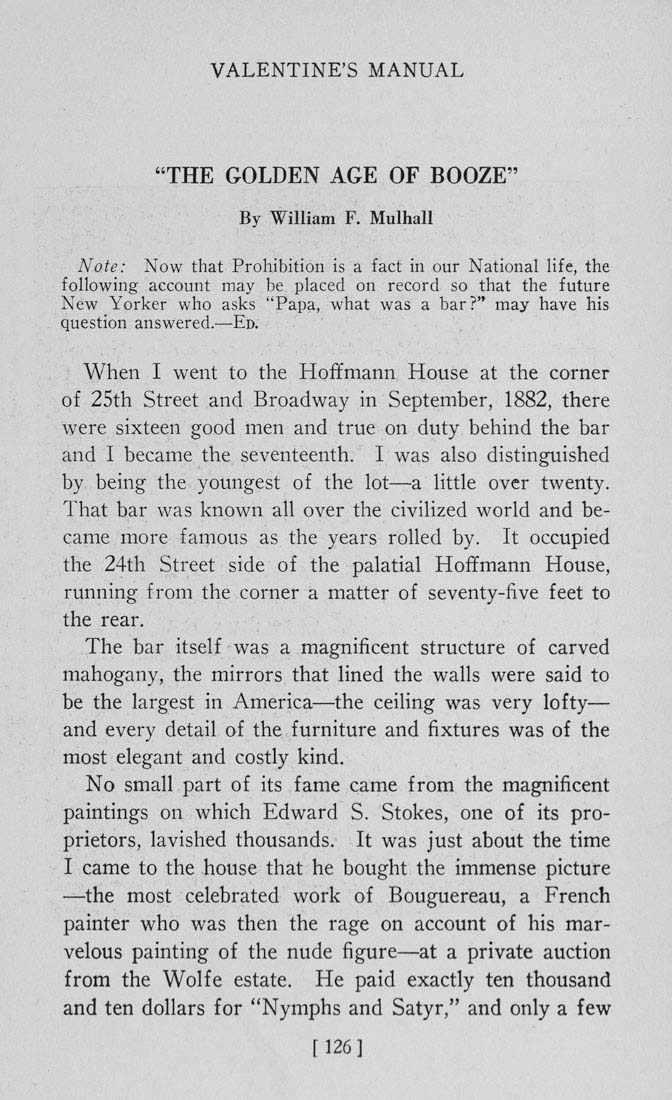VALENTINE'S MANUAL
"THE GOLDEN AGE OF BOOZE"
By William F. Mulhall
Note: Now that Prohibition is a fact in our National life, the
following account may be placed on record so that the future
New Yorker who asks "Papa, what was a bar?" may have his
question answered.—Ed.
When I went to the Hoffmann House at the corner
of 25th Street and Broadway in September, 1882, there
were sixteen good men and true on duty behind the bar
and I became the seventeenth. I was also distinguished
by being the youngest of the lot—a little over twenty.
That bar was known all over the civilized world and be¬
came more famous as the years rolled by. It occupied
the 24th Street side of the palatial Hoffmann House,
running from the corner a matter of seventy-five feet to
the rear.
The bar itself was a magnificent structure of carved
mahogany, the mirrors that lined the walls were said to
be the largest in America—^the ceiling was very lofty—
and every detail of the furniture and fixtures was of the
most elegant and costly kind.
No small part of its fame came from the magnificent
paintings on which Edward S. Stokes, one of its pro¬
prietors, lavished thousands. It was just about the time
I came to the house that he bought the immense picture
—the most celebrated work of Bouguereau, a French
painter who was then the rage on account of his mar¬
velous painting of the nude figure—at a private auction
from the Wolfe estate. He paid exactly ten thousand
and ten dollars for "Nymphs and Satyr," and only a few
[126]
|








